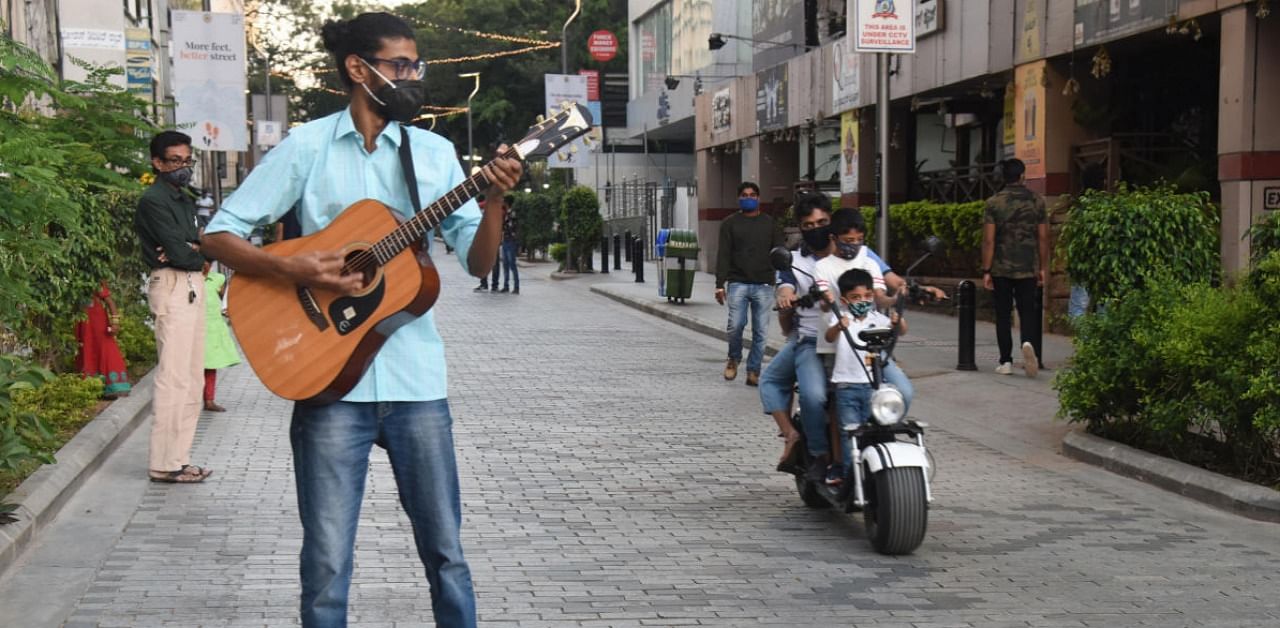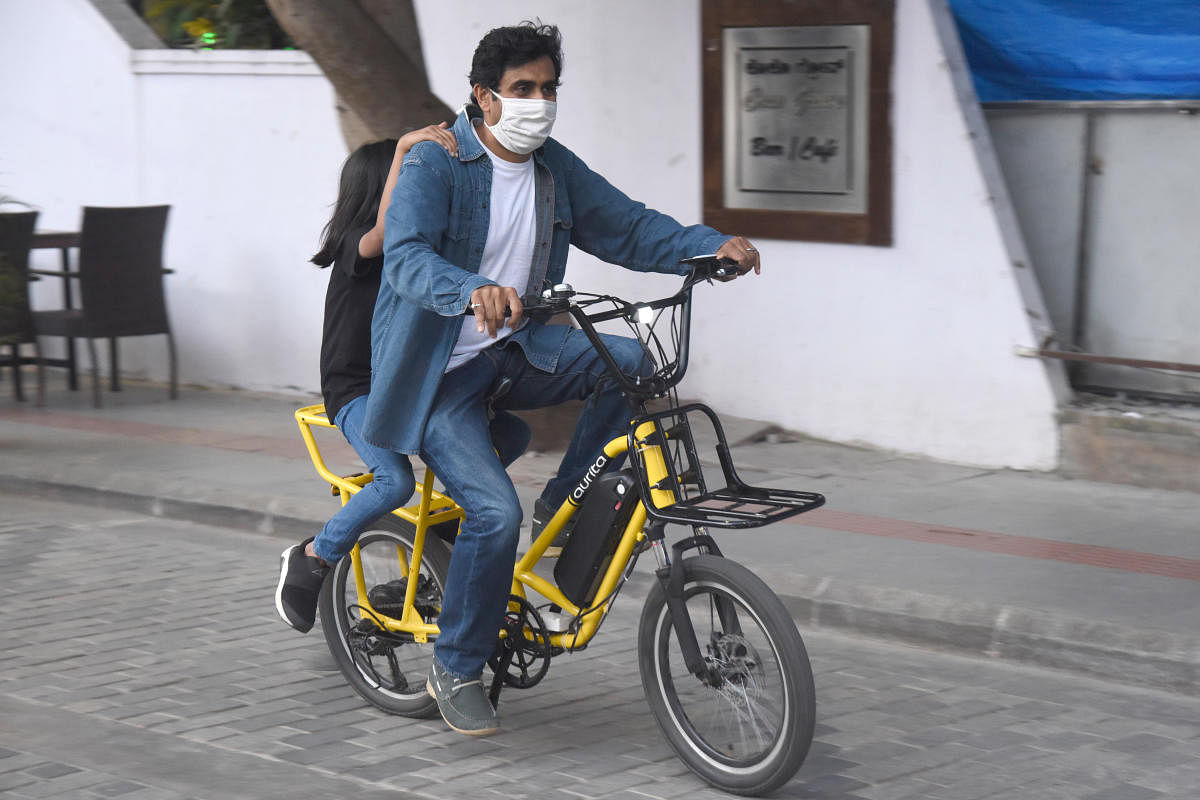

The Clean Air Street Initiative on Church Street, a pilot project to test the impact of traffic closures, has given a shot in the arm for officials who reported improvement in air quality.
“Particulate matter levels have come down,” said V Manjula, Commissioner, Department of Urban Land Transport (DULT). The Karnataka State Pollution Control Board is, however, yet to release the data.
The ban on traffic from Saturday 10 am to Sunday midnight has become the focal point of a new experiment to demonstrate new ways to combat air pollution. Backed by Catapult Network in the UK, including a satellite vertical to monitor air quality levels, the project by the DULT will be extended to other streets.
Experts said it could usher in a new era of transit management in the city. Bob Burgoyne, Lead for Innovating for Clean Air (IFCA), Connected Places Catapult, explained that the project is inherently a demonstrator for solutions to tackle air pollution and for associated clean technologies under development by local and UK-based innovators.
“The project is only a small brick in the wall but raises huge opportunities for a transit rethink,” Burgoyne said.
The project comes at a time when the city’s traffic problems have reached a crescendo. A traffic index compiled by the GPS company, TomTom, places Bengaluru at the top of a list of the world’s worst-congested cities. With 71% congestion, an average person loses 243 hours per year to traffic jams.
Manjula said it took about three months of planning to execute the Church Street pilot project. More projects are planned, including at Gandhi Bazaar, Malleswaram 8th Cross and at Commercial Street.
“There are associated challenges,” Manjula said. “In Gandhi Bazaar, for example, there are a lot of street vendors, which Church Street does not have. We are planning to make Commercial Street accessible only to pedestrians.”
Church Street was the perfect first test-bed because it is well-connected to the metro network.
Challenges
But would the system work on a city-wide scale? Already, there have been rumblings of discontent among residents of Church Street.
“Once it becomes clear what the gains are, the criticism usually fizzles out,” said Ashish Verma, Associate Professor, Transportation Systems Engineering at the Indian Institute of Science (IISc), who is helming a study to gauge the impact on quality of life of residents as well as the economic impact on businesses.
Burgoyne echoed the view. “In London, when a ‘Closure of Street’ programme was introduced in late 1990, the initial reaction was negative. Now, it is overwhelmingly positive because people began to see a noticeable improvement to air quality and a drop in noise levels,” he said.
Verma said similar measures were in place in Paris, too, which has a population density as high as Bengaluru.
“The footfall in London and Paris are higher than in Bengaluru because they are tourist destinations. There needs to be a clear education on the impact of street closure to traffic. There also needs to be careful planning,” he said.
Innovations
Andrew Stokes, International Business Development Manager, Energy Systems Catapult, said Catapult was currently mentoring a group of 10 innovators in India and in the UK. “We are also working with the Department of International Trade for bilateral entrepreneurship support,” he told DH.
Among the innovations are electric mopeds and scooter boards, facial masks and air quality measuring sensors.
“If we scale up, we could potentially have 100 km of walkable city streets in the future,” said Sathya Sankaran, Director of Urban Morph, a project partner.